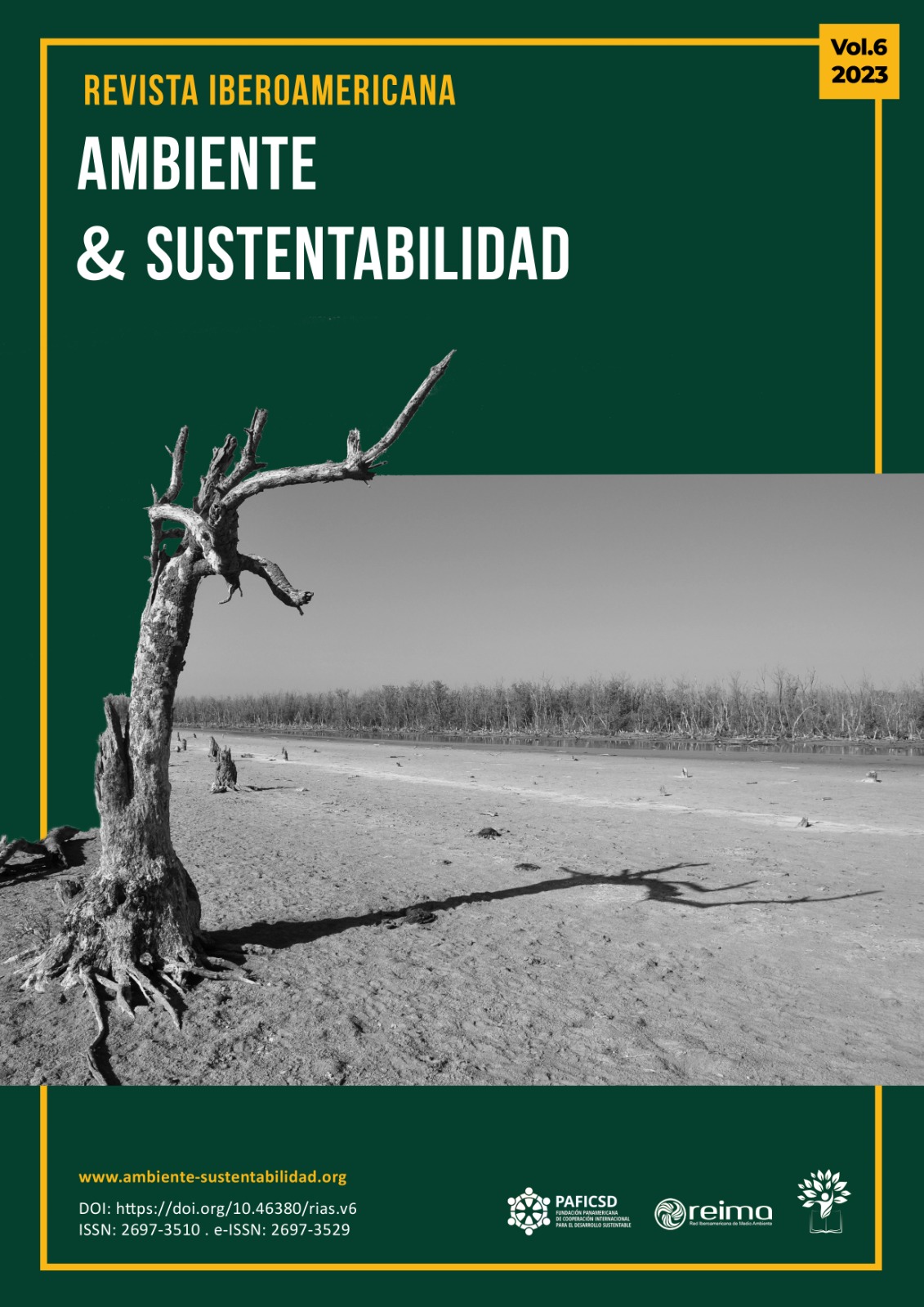The creation of a Geopark in Haiti, an opportunity for the country
DOI:
https://doi.org/10.46380/rias.vol6.e272Keywords:
Caribbean, cave, cross-border, geodiversity, geological heritage, speleologyAbstract
It has been more than three decades since the United Nations Educational, Scientific and Cultural Organization established the Man and Biosphere Program (MaB), which aims to protect flora and fauna resources, emphasizing the link between man and nature. Since 2001, this organization has established the Global Geoparks system, which aims to protect sites of great geological value and international importance within the framework of a sustainable development approach. In the Republic of Haiti, its geological heritage, although it does not date back beyond the Cretaceous, is rich and deserves to be studied and, in particular the southeastern region. This article advocates laying the foundations of the first geopark in the La Selle reserve; Haitian territory with a little-known geological heritage and where, from the point of view of speleology, more than forty caves have been catalogued. The creation of a geopark could contribute to the development of cross-border tourism between Haiti and the Dominican Republic, benefiting their respective communities.
Downloads
Metrics
References
Butterlin, J. (1960). Caractères géographiques et géologiques généraux de la république d’Haïti. En J. Butterlin, Géologie générale et régionale de la république d’Haïti. Éditions de l’IHEAL. https://acortar.link/JT0DxR
Camargo, I. A., Pinargote, L. M., Brucil Almeida, J. G. y Vázquez-Taset, Y. M. (2021). Estudio comparativo entre los Geoparques de Latinoamérica y los Sitios de Interés Geológico: una mirada desde el geoturismo. Revista Internacional de Turismo, Empresa y Territorio, 5(1), 31-56. https://doi.org/10.21071/riturem.v5i1.13251
Comisión Nacional Haitiana de Cooperación. (2012). La réserve de biosphère La Selle Atouts et Défis. Commission Nationale de Coopération avec l’UNESCO. https://acortar.link/Q5iyiu
Corredor Biológico del Caribe. (2021) Nouvelle démarcation du Corridor Biologique dans la Caraïbe (Document de synthèse). https://acortar.link/KTQH2Z
Du, Y. y Girault, Y. (2018). A genealogy of UNESCO Global Geopark: Emergence and Evolution. International Journal of Geoheritage and Parks, 6(2), 1-17. https://acortar.link/qHt8hO
Du, Y. y Girault, Y. (2019). Pratiques géotouristiques et interprétation de la nature dans les géoparc chinois : entre tensions et hybridation des cultures. Éducation relative à l’environnement, 15(1), 3393. https://doi.org/10.4000/ere.3393
Haiti Climat. (2021). Parc National La Visite. https://acortar.link/dXJ5Z4
Haiti National Trust. (2022). La Visite. Topographic Maps. https://www.haititrust.org/la-visite
Hedges, B. Warren, B., Timyand, J. y Zhiqiang, Y. (2018). Haiti’s biodiversity threatened by nearly complete loss of primary forest. PNAS, 115(46), 11850-11855. https://doi.org/10.1073/pnas.1809753115
Jardin Botanique National Haïtien. (2022). Plan d’aménagement sommaire. https://acortar.link/MGU7rW
Ministère de l’Environnement. (2020). Haïti biodiversité 2030 Stratégie nationale et plan d’actions pour la biodiversité biologique (Révisé-2030). https://acortar.link/xtdp3i
Organización de las Naciones Unidas para la Educación, la Ciencia y la Cultura. (2023). UNESCO Global Geoparks. International Geoscience and Geoparks Programme. https://acortar.link/ALCisx
Organización de las Naciones Unidas para la Educación, la Ciencia y la Cultura. (2015). Estatutos del Programa Internacional de Ciencias de la Tierra y Geoparques. https://acortar.link/ZnDiUV
Pásková, M. y Hradecký, P. (2018). Río Coco (Nicaragua), Propuesta de Geoparque. Revista de Temas Nicaragüenses. (119), 309-321. https://acortar.link/xtdp3i
Rivera, A. L., Salazar, Y. P. y Pérez, J. J. (2019). Participación de las comunidades indígenas en la región del Geoparque Rio Coco Somoto, municipio de Totogalpa, Madriz [Tesis de grado, Universidad Autónoma de Nicaragua]. Repositorio. https://acortar.link/dA4TPD
Sánchez-Cortez, J. y Simbaña-Tasiguano, M. (2018). Los geoparques y su implantación en América Latina. Estudios Geográficos, 79(285), 445-467. https://doi.org/10.3989/estgeogr.201817
Santana, A. (24 de noviembre de 2021). Corredor Biológico en el Caribe. EcuRed. https://acortar.link/Hsp16i
Testa, O., Devillers, C., Fabriol, J. F. y Jagou, S. (2013). Grottes et gouffres du Sud-Est d’Haïti. Aventures spéléologiques. https://acortar.link/IENLI4
Université d’État d’Haïti. (2016). Brochure Unité de Recherches en Géoscience, Faculté des Sciences. http://www.urgeo.net/PDF/brochure_URGeo.pdf
Urqui?, L. C. y Cortés, A. G. (2010). Geoparques, significado y funcionamiento. Instituto Geológico y Minero de España. https://www.igme.es/patrimonio/Geoparques-IGME2014-1.pdf
Published
How to Cite
Issue
Section
License
Copyright (c) 2023 Jean Fernney Piou

This work is licensed under a Creative Commons Attribution-NonCommercial-ShareAlike 4.0 International License.
This work is licensed under a Creative Commons Attribution-NonCommercial-ShareAlike 4.0 International License (CC BY-NC-SA 4.0)
© This license allows users to distribute, remix, adapt, and build upon the material in any medium or format, provided that attribution is granted to the creator.














